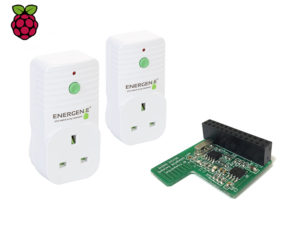In recent years, 4K/UHD (Ultra HD) content and devices have taken the world by storm. This is such a popular feature that we have actually discussed it in-depth in a past article. For many, this has been the natural progression of things. To improve their viewing experiences at home, it was an obvious decision to upgrade from their former Full-HD (1080p) setups. For others, this decision holds much more weight.
Whether it is a lack of expendable income, concerns about longevity, or simply a lack of interest, there are plenty of individuals who have yet to move on to a full 4K setup. For many, their concerns stem from the potential cost of building a full setup to run 4K/UHD content- after all, a 4k television, 4k blu-ray player, and the videos to play on these devices all cost money. If cost is an issue, you could benefit by upgrading your devices piecemeal.
The premise of having a full 4K/UHD setup is obviously tempting, as it should be. These devices provide beautiful, entrancing viewing experiences that are notable improvements over their traditional Full-HD counterparts. However, each component of a 4K setup has its own benefits; they all serve different purposes which, even alone, serve as upgrades to a traditional setup.
4K/UHD Televisions
Many 4K/UHD Televisions have the unique feature of upscaling their video output to higher resolutions. Upscaling refers to the act of taking footage that is rendered at a lower resolution than what is native to the television (so in this case, it could be 1920x1080 or 1080p footage) and rendering it at or near the expected resolution (UHD or 3840x2160).
Upscaling
I need to be clear here and stress that this does not produce the same level of quality that one would experience by playing UHD content on the same 4K television. Upscaling is an in-depth process that, in essence, uses various algorithms to automatically take videos (which are long sequences of images, or ‘frames’, for our purposes) and increase the number of pixels that make up each frame. This needs to happen incredibly quickly in order to not be noticeable by the viewer.
[caption id="attachment_1575" align="aligncenter" width="300"]

Figure A: 1080p - Zoomed in 200%.[/caption]
[caption id="attachment_1576" align="aligncenter" width="300"]

Figure B: 1080p image upscaled to 4k. Zoomed in 200%.[/caption]
[caption id="attachment_1577" align="aligncenter" width="300"]

Figure C: True 4K, zoomed in 200%.[/caption]
The resulting image is dramatically improved from that of standard 1080p, but still not nearly as detailed as true 4K. Figures A-C shows a highly zoomed-in (200%) comparison of the same image at 1080p, Upscaled 4K, and Native 4K. The effects of upscaling are clear: the native image is highly pixellated, with a great deal of 'tessellation' (the jagged edges around objects). The upscaled image is much less jagged, and while it is blurry it is still a drastic improvement over its predecessor. The final image of the three, the Native 4K image, clearly has a greater amount of detail than the others due to its incredibly fine resolution. If the difference is not noticeable, look a bit closer at the screen. From distances, they appear more similar due to their size, while on a large television they are extremely noticeable.
This is perhaps the most noticeable means through which a 4K television can serve as an upgrade without opting for additional upgrades. Even non-4K video will suddenly look better upon acquiring this new television! Aside from that, many streaming services such as Hulu and Netflix offer the option to stream 4K/UHD content, although one should ensure that their internet connection is fast enough to handle it prior to making the commitment.
4K Blu-ray Players Without 4K Televisions?
There is one upgrade on the path to a full Blu-ray setup that could potentially be more noticeable than all others- 4K Blu-ray players. Even without with a 4K Television, these could significantly improve one's viewing experience. There are some caveats I would put in place here, however. While a 4K Television will provide a blanket improvement on video quality through upscaling, many 4K Blu-ray players offer the option of improving video quality through 'downscaling'.
Put simply, downscaling is a process wherein an image is rendered at a higher resolution and then output at a lower one. While this might sound pointless, there is a notable difference. These images obviously do not have the full, incredible detail one would see in a 4K image. At the same time, a downscaled video will typically look better than the alternative 1080p version. There are other considerations to make, such as the source of videos; streamed videos see a loss in quality no matter what, simply as a result of them downloading over time. However, that is as much an issue of internet connection speeds as it is hardware. For Blu-rays specifically, downscaling can drastically improve image quality.
[caption id="attachment_1567" align="aligncenter" width="300"]

A comparison between 4K downsampled (left) and standard 1080p (right). Source: https://www.premiumbeat.com/[/caption]
[caption id="attachment_1568" align="aligncenter" width="300"]

A comparison between 4K Offline (Blu-ray) and 4K Streaming (YouTube). Source: https://www.premiumbeat.com/[/caption]
Other considerations need to be made when purchasing these devices. Additional hardware components, the quality of the upscaling and downscaling from devices, internet connection speeds, and the films themselves are all important. The ultimate point of this is to show that you
can benefit from purchasing a new television or Blu-ray player now- even if you do not have a full setup ready to go. Some great examples of devices that have these features are:
Televisions:
Blu-ray Players
Of course, we recommend you ensure that you are purchasing a Blu-ray player or Television that explicitly advertises these features if you desire them. Not all devices feature proper upscaling or downscaling. If you are looking to upgrade slowly, it is certainly a possibility.
If you are wanting region-free Blu-ray players or televisions,
220-Electronics.com carries everything you need at fantastic, discounted prices. These devices are modified by professionals at 220-Electronics to work around the world at the press of a button. If you are interested in upgrading your home theatre, the staff at
220-Electronics can offer their assistance in planning and purchasing!









 Many people move, relocate, or travel and work abroad each year and those numbers are growing rapidly. From retirees and expats to people who've accepted job offers and are moving to a foreign land, there's no shortage of people moving about internationally. But what happens when you arrive at your destination? If your new home isn't furnished and you didn't send your electronics and appliances overseas, you'll be forced to buy these items locally - and that can be a real hassle.
Due to higher prices caused by lower product demand, it can be very costly to furnish a home in some countries. Also, there is usually a much smaller selection of brands and models to chose from when compared to the US or Europe. You may end up paying nearly double for your appliances without finding what you're really looking for - and at that point, you'll have no choice. However, if you plan accordingly you can eliminate the stress, hassle and high prices altogether.
At
Many people move, relocate, or travel and work abroad each year and those numbers are growing rapidly. From retirees and expats to people who've accepted job offers and are moving to a foreign land, there's no shortage of people moving about internationally. But what happens when you arrive at your destination? If your new home isn't furnished and you didn't send your electronics and appliances overseas, you'll be forced to buy these items locally - and that can be a real hassle.
Due to higher prices caused by lower product demand, it can be very costly to furnish a home in some countries. Also, there is usually a much smaller selection of brands and models to chose from when compared to the US or Europe. You may end up paying nearly double for your appliances without finding what you're really looking for - and at that point, you'll have no choice. However, if you plan accordingly you can eliminate the stress, hassle and high prices altogether.
At  When TV was first designed, there was a set of standards used to control how the information was sent from the broadcasting station to the TV, and how the TV interpreted this information into a picture on the TV screen. In North America, this standard is known as NTSC which stands for National Television Systems Committee. There are also two other types of standards used around the world; PAL (Phase Altering Line) and SECAM (Sequential Color with Memory).
The systems used vary by country and/or region, but they all use one of the three standards: PAL, NTSC, or Secam. Digital cable, VHS, DVD, and Blu-ray also adhere to these color information standards. PAL TVs are only compatible with a PAL signal or other Pal components. The same is true for NTSC and SECAM. It's not possible to use a PAL TV with a NTSC Blu-ray Player or vice-versa. If you wanted to use your NTSC player to watch movies on a PAL or SECAM TV, you'd need to use an
When TV was first designed, there was a set of standards used to control how the information was sent from the broadcasting station to the TV, and how the TV interpreted this information into a picture on the TV screen. In North America, this standard is known as NTSC which stands for National Television Systems Committee. There are also two other types of standards used around the world; PAL (Phase Altering Line) and SECAM (Sequential Color with Memory).
The systems used vary by country and/or region, but they all use one of the three standards: PAL, NTSC, or Secam. Digital cable, VHS, DVD, and Blu-ray also adhere to these color information standards. PAL TVs are only compatible with a PAL signal or other Pal components. The same is true for NTSC and SECAM. It's not possible to use a PAL TV with a NTSC Blu-ray Player or vice-versa. If you wanted to use your NTSC player to watch movies on a PAL or SECAM TV, you'd need to use an  Not all electronics are created equal. Around the world there are many differences in electronics and home appliances that you might not be aware of, with the operating voltage of these devices being a major factor. If you're traveling to a country that uses a different voltage you'll probably need a converter to safely use your electronics. However, what can you do when you're traveling to a country with the same voltage but different electrical outlets that aren't compatible with the plugs on your devices? Get a universal foreign plug adapter.
Not all electronics are created equal. Around the world there are many differences in electronics and home appliances that you might not be aware of, with the operating voltage of these devices being a major factor. If you're traveling to a country that uses a different voltage you'll probably need a converter to safely use your electronics. However, what can you do when you're traveling to a country with the same voltage but different electrical outlets that aren't compatible with the plugs on your devices? Get a universal foreign plug adapter.
 If you're like many people around the world who have relocated to different countries or continents, you're probably aware of the challenges. You may be moving to retire and live less expensively in a tropical paradise, or maybe you're relocating for work. You also might be moving just because you found the perfect place where you've decided you want to settle. It can be a very exciting and highly rewarding experience, but it's surely not without its setbacks. From legal documents regarding visas and citizenship, to banking, investments, and finding & securing property, there's no shortage of hoops to jump through. Moving overseas requires some definite patience. On the other hand, if you know what you're doing, you can streamline your international relocation and reduce the headaches.
As specialists in international relocation, 220 Electronics offers services that cater to a rather important part of your move. As a global retailer of electronics and home appliances, we are constantly helping people who are planning to relocate or have already done so.
You might be asking what electronics and appliances has to do with relocation, so let's answer that question for you in the simplest way possible.
If you're like many people around the world who have relocated to different countries or continents, you're probably aware of the challenges. You may be moving to retire and live less expensively in a tropical paradise, or maybe you're relocating for work. You also might be moving just because you found the perfect place where you've decided you want to settle. It can be a very exciting and highly rewarding experience, but it's surely not without its setbacks. From legal documents regarding visas and citizenship, to banking, investments, and finding & securing property, there's no shortage of hoops to jump through. Moving overseas requires some definite patience. On the other hand, if you know what you're doing, you can streamline your international relocation and reduce the headaches.
As specialists in international relocation, 220 Electronics offers services that cater to a rather important part of your move. As a global retailer of electronics and home appliances, we are constantly helping people who are planning to relocate or have already done so.
You might be asking what electronics and appliances has to do with relocation, so let's answer that question for you in the simplest way possible.
 If you're relocating overseas, you're probably no stranger to the fact that it involves a lot of planning and preparation. Aside from dealing with passports, visas, banking and securing a home in a foreign country, you'll still have to furnish your new living space and prepare to make the transition into your new home. One of the most tiresome things about a foreign relocation is the initial adjustments and creating a space that genuinely feels like home. You can expect to spend a good amount of time and money shopping for necessities such as beds, appliances, electronics and more - all of which can be a bit overwhelming in an unfamiliar place. On the other hand, there are options to simplify this process and streamline your transition.
If you're relocating overseas, you're probably no stranger to the fact that it involves a lot of planning and preparation. Aside from dealing with passports, visas, banking and securing a home in a foreign country, you'll still have to furnish your new living space and prepare to make the transition into your new home. One of the most tiresome things about a foreign relocation is the initial adjustments and creating a space that genuinely feels like home. You can expect to spend a good amount of time and money shopping for necessities such as beds, appliances, electronics and more - all of which can be a bit overwhelming in an unfamiliar place. On the other hand, there are options to simplify this process and streamline your transition. Many of you might be familiar with this, but then many of you may not. So here's the situation; you're moving overseas for some reason (work, retirement, personal, etc.) and you're trying to get a place setup to live. You might be building a home, buying a home or renting a home and you're going to need to furnish it with electronics and appliances.
Many of you might be familiar with this, but then many of you may not. So here's the situation; you're moving overseas for some reason (work, retirement, personal, etc.) and you're trying to get a place setup to live. You might be building a home, buying a home or renting a home and you're going to need to furnish it with electronics and appliances. 

